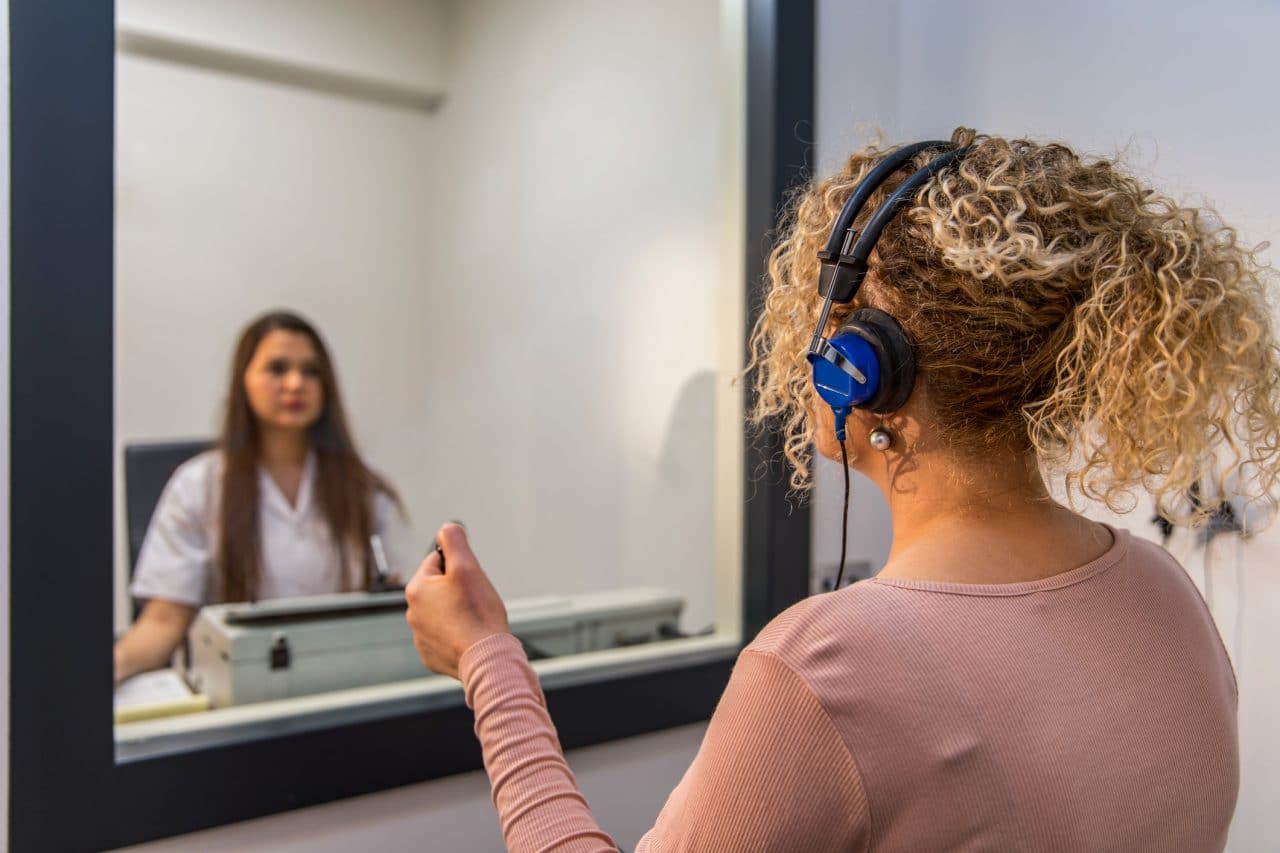An estimated 23% of Americans ages 12 and older have some degree of hearing loss, according to one study. If you’re one of this population, you could be missing out on important sounds everywhere, such as at Bold Bean Coffee Roasters. The first step toward getting treated for your hearing loss is to undergo a hearing test. There are many types of hearing tests available, which we review below.
Pure Tone Testing

Pure tone testing, also known as pure tone audiometry, uses air conduction to measure your ability to hear sounds at various volumes and pitches. During this test, you’ll wear headphones and sit in a sound-proof booth. A series of tones will be played through the headphones, and you’ll indicate each time you can hear one.
Speech Testing
Similar to pure tone testing, this test is conducted in a sound-proof booth while wearing headphones. But instead of tones, words will be played, which you’ll repeat back to the audiologist. The test may be repeated with background noise playing, as well.
Bone Conduction Testing
For this test, a conductor is placed behind the ear, which sends tiny vibrations through the skull bone directly to the inner ear. Machines are used to measure how your inner ear responds to the sounds.
Tympanometry
This test measures how your eardrum moves in response to changes in air pressure. It can help your audiologist determine whether you have a build-up of fluid or wax, or if you have a perforation in the eardrum.
Acoustic Reflex Testing
This test measures the involuntary muscle contractions of the middle ear. It is used to determine the location of your ear that is causing the hearing problem as well as the type of hearing loss.
Auditory Brainstem Response (ABR)
This test is used to screen for sensorineural hearing loss – which means hearing loss caused by nerve damage. During the ABR test, you’ll wear electrodes on your head as well as a set of headphones. The electrodes will measure your brain activity in response to sounds. It’s most commonly used for newborns.
Otoacoustic Emissions (OAEs)
OAEs are the sounds generated by the vibrations of the hair cells within your inner ear. This test uses a tiny probe with a microphone and speaker to stimulate the cochlea and measure its response to sounds. This test can be used to determine whether there’s a blockage in the ear canal, fluid in the middle ear or damage to the hair cells.
For more information about tests for hearing loss, call the experts at The McCoy Institute today.